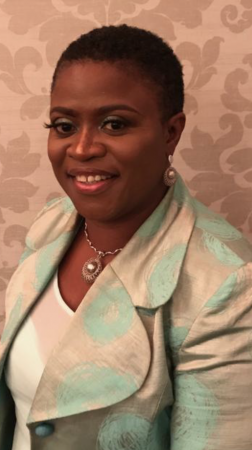
Meet the Therapist: Grace Ovba Adebiyi
Grace Ovba Adebiyi is a counsellor in East London and online
What attracted you to become a counsellor?
My initial career was working in the legal field where it involves asking questions and getting people to open up and be honest about what is going on for them and setting up an action plan. Furthermore, some people often spoke to me about their challenges and often sought for the way forward. I felt being a therapist was a calling and helped me foster a sense of purpose.
Where did you train?
I trained at both Hackney College and CANDI in North London as an integrative therapeutic counsellor.
What type of therapy do you practise?
I am an integrative counsellor, this comprises of person-centred therapy (humanistic), psychodynamic / relational theory and Gestalt theory. This means valuing my client as the expert in their own lives and situations. I work with the clients to help them find answers. Thus, enabling people to integrate different parts of themselves thereby taking back their power. In so doing, they become more self-aware and let their ‘authentic self’ emerge more frequently.
Psychodynamic / relational theory looks at the root of current problems which might stem from childhood and relationship with primary caregivers. This is done through the exploration and understanding of their conscious and unconscious thoughts, patterns in relationships that might have roots in the past but continues to affect the present. The therapeutic relationship often brings about the healing process during the therapy sessions.
In addition to this, I use Gestalt theory which comprises of exercises and experiments taken from the approach to help my clients explore and reconnect with aspects of themselves they’ve been denying, disregarding or overlooking as well as examining personal conflicts.
How does integrative therapy help with symptoms of anxiety and depression?
Most clients suffering from these issues are often fearful, worried and feel very low. Firstly, I build a trusting relationship in doing the work. My approach begins at looking at the genesis or root cause of the presenting issue and try to uncover patterns of behaviour which might have stemmed from their past. The person-centred part of my work trails the client’s feelings, emotions, thoughts, behaviour and help them get in touch with these feelings, thoughts and emotions.
Some types of anxiety disorder like panic attacks and social anxiety disorder - an approach most useful to use is the cognitive behavioural therapy (CBT) to work on improving the day to day life of the client as well as incorporating coping skills like breathing exercises to calm the client and help them resolve the issues. I work at my client’s pace and help them draw inner strength and resilience whilst working together as a team. I also utilise Gestalt where we incorporate exercises, creative work bringing out the inner child.
What sort of people do you usually see?
I usually work with adult clients of any age and varying backgrounds but often with people within the ages of late 20s and early 40s, who have reached cross-roads in their lives and want a change. The range of issues my clients bring to therapy are: anxiety, depression, shame, low self-esteem and self-worth, adaptation and integration – cultural differences, isolation, eating disorders, mental and emotional abuse to name a few.
What do I like about being a therapist?
I enjoy and love the privilege of being able to work and know my clients, trusting my intuition, being part of their journey and find it extremely rewarding to be in a position to help and support them whilst trusting me with their feelings, emotions and innermost thoughts and making significant life changing transformation.
What is less pleasant?
Working unsociable hours and you can easily get burnt out if you’ve not got a good support system. The unpredictability of varied income is also unpleasant.
How long you’ve been with welldoing.org and what you think of us?
I have relatively recently joined but feel at home. I feel it is a great platform for me professionally and like the part of being a member of a larger family. I look forward to sharing and learning from other therapists.
Do you ever suggest books or apps to clients?
Yes, I sometimes suggest reading materials, books or apps to clients who I feel is relevant to what they’re working through and is useful in supporting them. For example: Complex PTSD Surviving to Thriving by Pete Walker.
What I do for my own mental health?
I make a conscious effort for self-care: listening to music, dancing, reading, see my own therapist, go on holidays and visit the gym occasionally. This helps me relax and unwind immensely.
You are a therapist in Eastham and Dalston Hackney. What can you share with us about seeing clients in those areas?
I tend to work and see lots of clients in their late 20s and older people in their early 40s to mid-50s. Anxiety, depression, loneliness, integration and adaptation, mental and emotional abuse are issues often faced. They want to be happy and succeed but struggle with a lot of financial burdens.
What’s your consultation room like?
I work in a large airy room with few plants and few paintings which is calming and helps you relax instantly. It is on the 2nd floor and gives a sense of privacy.
What do you wish people knew about therapy?
Therapists don’t ‘fix’ your problems but people should see it as building a committed, trusting, safe, honest, authentic relationship with the therapist which invariably leads to the healing process.
What did you learn about yourself in therapy?
Therapy helped me utilise my caring and sensitive nature as a strength which I employ in supporting my clients. Change gives me the capacity to grow, accept myself fully and continue to be a work in progress.










